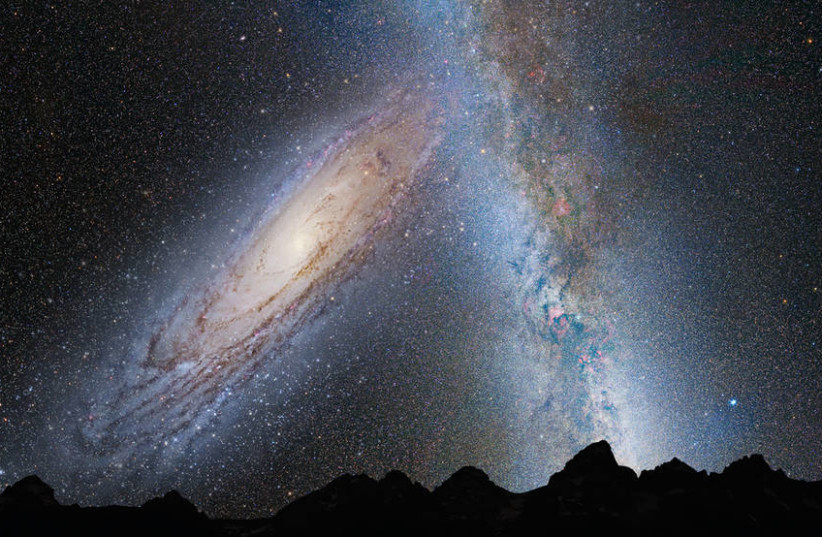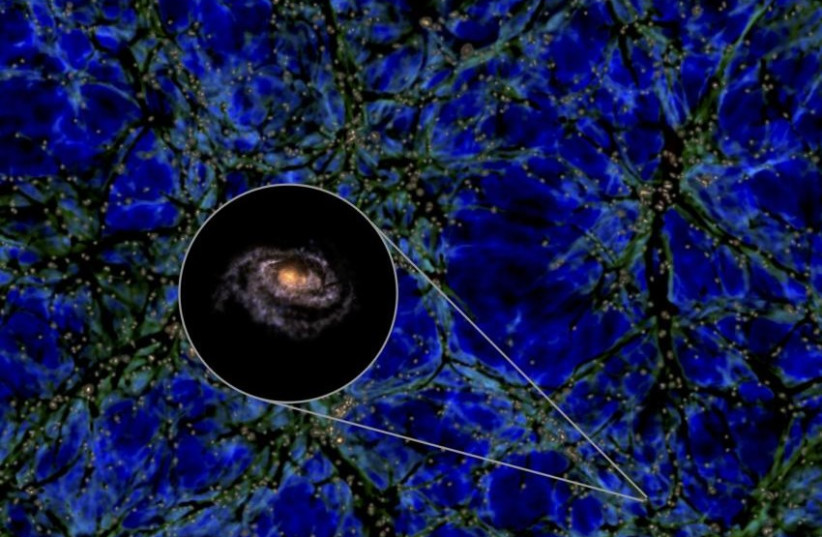"But thou, O Daniel, shut up the words, and seal the book, even to the time of the end: many shall run to and fro, andknowledge STRONG’S 1847: daꜥath, dah´-ath; from 3045; knowledge:—cunning, (ig-)norantly, know(-ledge), (un-)awares (wittingly).shall be increased." — Daniel 12:4
The Milky Way is too massive for its part of the universe, a feature that appears to make it unique, at least with what we know about the universe, according to a new study published on Monday.
Our home galaxy is surrounded by a “cosmological wall” – a flattened arrangement of galaxies that surrounds other galaxies with empty regions called “voids” on either side of the flattened arrangement. The voids appear to press the galaxies together into these flattened arrangements.
In the Milky Way’s case, the wall is called the Local Sheet. While usually, galaxies are much smaller than the wall they’re in, the Milky Way is surprisingly massive compared to the Local Sheet.
“If you could see the nearest dozen or so large galaxies easily in the sky, you would see that they all nearly lie on a ring, embedded in the Local Sheet,” explained Joe Silk, one of the researchers behind the new findings, to the Royal Astronomical Society. “That’s a little bit special in itself. What we newly found is that other walls of galaxies in the Universe like the Local Sheet very seldom seem to have a galaxy inside them that’s as massive as the Milky Way.”
The peer-reviewed research, published in Monthly Notices of the Royal Astronomical Society, is based on a computer simulation which is part of the IllustrisTNG project.
A lonely Milky Way Analogue galaxy, too massive for its wall. The background image shows the distribution of dark matter (green and blue) and galaxies (here seen as tiny yellow dots) in a thin slice of the cubic volume in which we expect to find one of such rare massive galaxies. (credit: Miguel A. Aragon-Calvo and Illustris TNG project)
The projects simulated an area of the universe about a billion light-years across, containing millions of galaxies. Only about a millionth of all the galaxies in the simulation were as massive as the Milky Way and embedded in a cosmological wall like the Local Sheet.
Research shows need to avoid ‘Copernican Bias’
The team of researchers behind the new findings noted that this shows that the Milky Way’s special environment needs to be taken into account when running simulations in order to avoid the “Copernican Bias.”
The Copernican Bias describes the assumption that Earth and the Milky Wayshould be assumed to be completely average places in the universe as we now understand that we are not the center of the universe.
When conducting simulations, astronomers often assume that any point in a simulation is as good as any other, but the team’s findings indicate that more precise location choices may be important when making measurements.
“So, the Milky Way is, in a way, special,” said research lead Miguel Aragón in an article by the Royal Astronomical Society. “The Earth is very obviously special, the only home of life that we know. But it’s not the center of the Universe, or even the Solar System. And the Sun is just an ordinary star among billions in the Milky Way. Even our galaxy seemed to be just another spiral galaxy among billions of others in the observable Universe.”
“You might have to travel a half a billion light years from the Milky Way, past many, many galaxies, to find another cosmological wall with a galaxy like ours.”
Research lead Miguel Aragón
“You might have to travel a half a billion light years from the Milky Way, past many, many galaxies, to find another cosmological wall with a galaxy like ours,” added Aragón. “That’s a couple of hundred times farther away than the nearest large galaxy around us, Andromeda.”
Dr Mark Neyrinck, another member of the team, stressed that researchers do need to be careful when qualifying certain properties as “special.”
“If we added a ridiculously restrictive condition on a galaxy, such as that it must contain the paper we wrote about this, we would certainly be the only galaxy in the observable Universe like that. But we think this ‘too big for its wall’ property is physically meaningful and observationally relevant enough to call out as really being special.”





